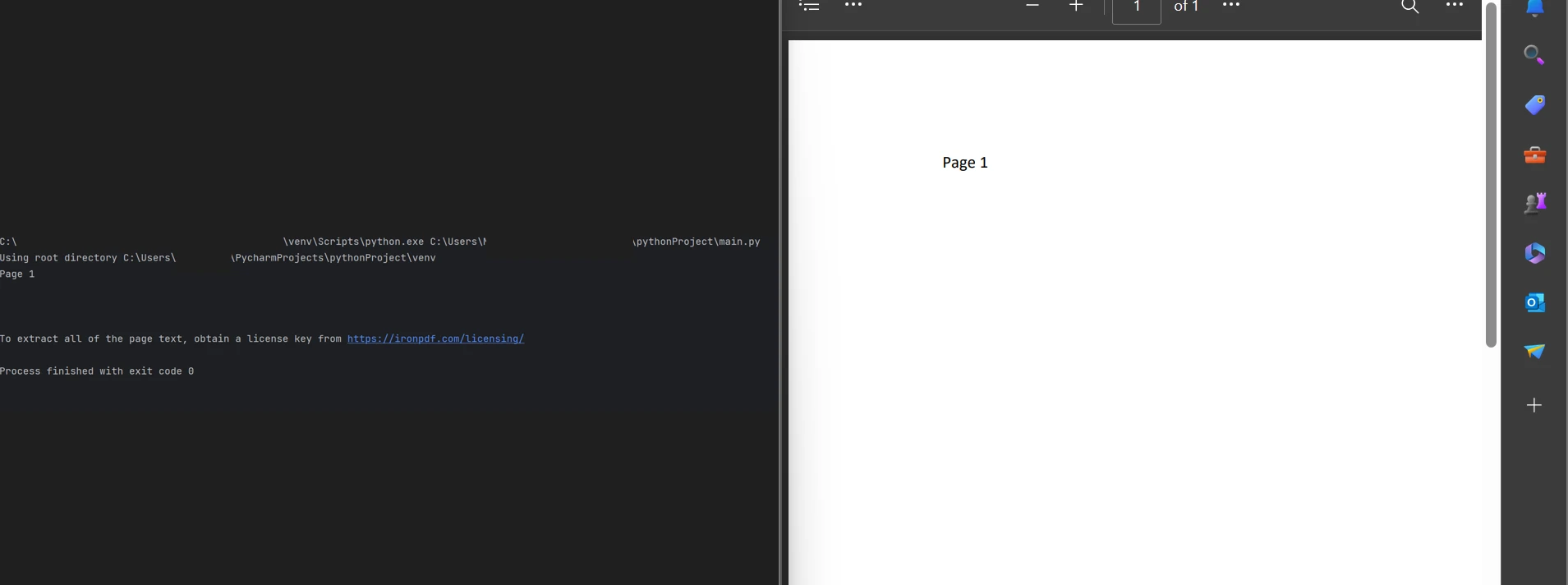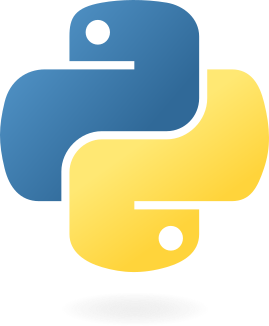Published July 1, 2023
How to Convert PDF to Text in Python (Tutorial)
1.0 What is a PDF?
When it comes to document sharing, the Adobe-created Portable Document Format (PDF) is crucial for preserving the integrity of text-rich and aesthetically beautiful content. In most cases, a specific program is required in order to access online PDF files. These days, many important digital publications require PDF files. Many businesses utilize PDF files to create expert documentation and invoices. IronPDF Python is one of the most powerful PDF libraries, which allows you to extract any text available in a PDF document.
How to Convert PDF to Text in Python
2.0 How to Extract Text from a PDF Using Python?
- Install the latest version of python here
- Open any IDE tools for python
- Install Dot Net Core runtime
- Install the IronPDF python library or download from here
- Extract text from the PDF
2.1 What is IronPDF for Python?
It is straightforward to integrate the IronPDF library in Python as it is a much more dynamic language compared to other languages, and enables developers to create graphical user interfaces quickly and easily. It has a plethora of pre-installed tools, including PyQT, wxWidgets, kivy, and numerous additional packages and libraries, all of which may be used to rapidly and securely create a fully complete GUI.
IronPDF Python is an extremely efficient library, particularly useful for web development. The availability of so many Python web development paradigms, like Django, Flask, and Piramyd, is partly to blame for this. These frameworks have been used by numerous websites and online services, including Reddit, Mozilla, and Spotify.
2.2 Features of IronPDF
- A PDF file can be created from a variety of sources, including HTML, HTML5, ASP, and PHP websites. In addition to HTML files, we can convert image files to PDF.
- IronPDF allows you to build interactive PDF documents, fill out and send interactive forms, split and combine PDF files, extract text and images from PDF files, search for certain words within a PDF file, rasterize PDF pages to images, convert PDF to HTML, and print PDF files.
- IronPDF can open PDF files, and print from a URL. Additionally, it enables user agents login behind HTML login forms, proxies, cookies, HTTP headers, custom network login credentials, form variables, and user agents.
- Images can be extracted from documents using IronPDF.
- With IronPDF, we can add headers, footers, text, pictures, bookmarks, watermarks, and more to our documents.
- We can combine and separate pages using a new or existing document using IronPDF.
- Without utilizing an Acrobat viewer, documents can be converted to PDF objects.
- A CSS file can be used to make a PDF document.
- The creation of documents is possible using media-type CSS files.
2.3 Import IronPDF Library
Include the following import statements at the start of the source files where IronPDF will be used in order to import IronPDF:
from ironpdf import *2.4 Set License Key (if Required)
Although IronPDF for Python is free to use, it watermarks PDF files with a tiled backdrop for free users. You must give the library a legitimate license key in order to use IronPDF to create PDFs free of watermarks. How to set up the library with a license key is shown in the following snippet of code:
License.LicenseKey = "IRONPDF-LICENCE-KEY-ABCDEFGH"Before creating PDF files or making changes to their content, make sure the license key is configured. The LicenseKey method should be called before any other lines of code. To get a free trial license key, get in touch with us or buy a license key from our licensing page.
2.5 Set Log files
A text file called "Default" can store log messages produced by Custom.log within the Python script's directory. The code snippet below can be used to set the LogFilePath property and customize the log file name and location:
# Set a log path
Logger.EnableDebugging = True
Logger.LogFilePath = "Custom.log"
Logger.LoggingMode = Logger.LoggingModes.All3.0 Extract PDF text with IronPDF
The IronPDF python library can convert PDF pages into PDF objects and enables text extraction from PDF files, which includes scanned PDF files. Here's an example that shows how to read an existing PDF using IronPDF.
The first method involves extracting all text available in a PDF; a sample of the code is provided below.
from ironpdf import *
# Load existing PDF document
pdf = PdfDocument.FromFile("content.pdf")
# Extract text from PDF document
all_text = pdf.ExtractAllText()
print(all_text)As illustrated in the code above, the Fromfile method is a PDF reader object which helps us load the existing PDF file and convert it into PDF-document objects. Using this object, we may read the text and images that are available on the PDF pages. The object provides a method called ExtractAllText that pulls every piece of text from the whole PDF file, holding the text in a string that may be processed. And we are using the print function to display the text.

The code example for the second method that we can use to page-by-page, extracting text from a PDF file. It's provided below.
from ironpdf import *
# Load existing PDF document
pdf = PdfDocument.FromFile("content.pdf")
# Extract text from specific page in the document
page_text = pdf.ExtractTextFromPage(1)The Fromfile method is used to load the PDF file from an existing file and convert it into PDF file object, as shown in the code above. A method on the PDF page object called ExtractTextFromPage retrieves all the text from a page in a PDF file. The page number must be provided as a parameter in order for us to extract text from that particular page. Then, after extracting the text, we transfer it into a variable to hold it as a string that can be processed.
Check out more examples to extract text from a PDF.
4.0 Conclusion
The IronPDF library, in contrast, offers strong security measures to reduce potential risks. It is not tailored to any one browser and works with all commonly used ones. IronPDF allows programmers to easily produce and read PDF files with just a few lines of code. The IronPDF library provides a range of licensing options, including a free developer license and extra development licenses that are available for purchase, to meet the needs of different developers.
IronPDF includes a perpetual license, a 30-day money-back guarantee, a year of software support, and upgrade options. There are no additional expenses after the initial purchase. These licenses can be used in development, staging, and production environments. Learn more about product licensing.
Download the software product.











